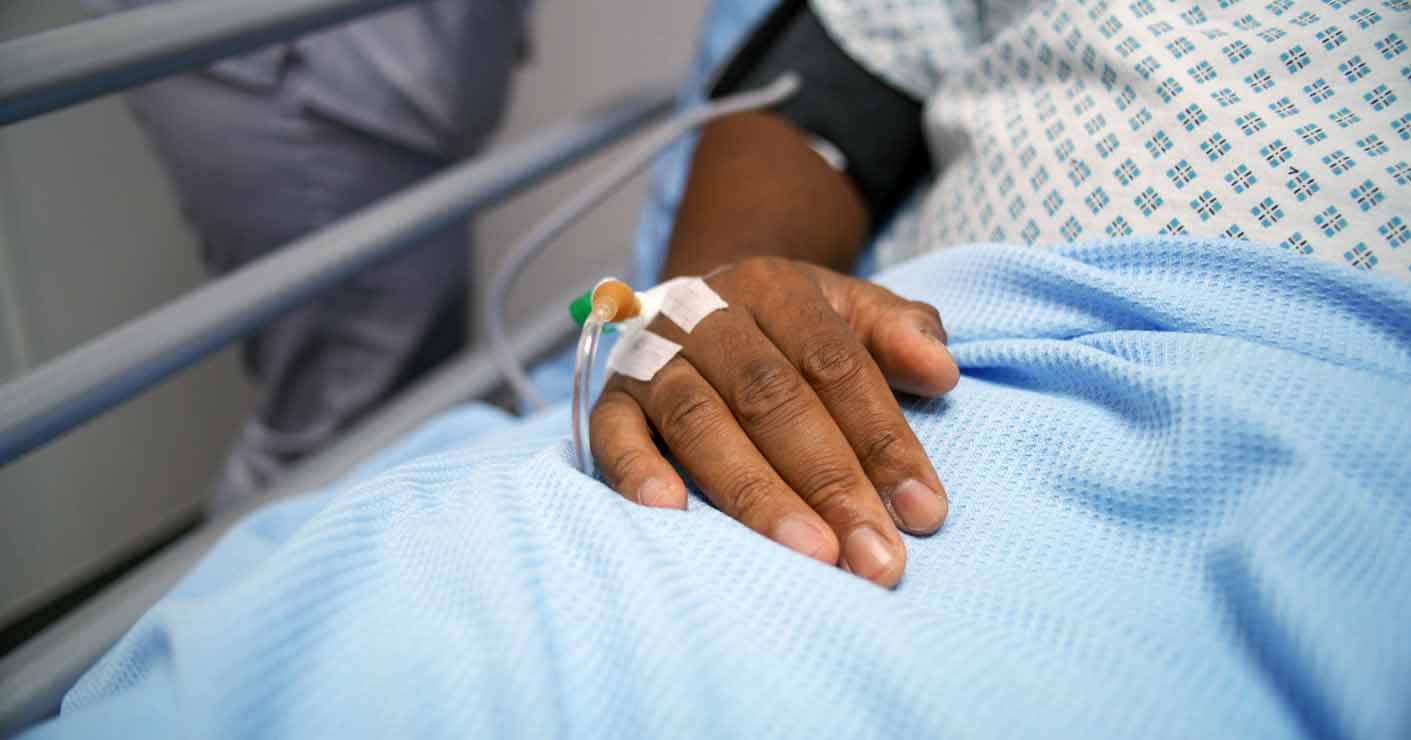The sections pertaining to measuring BP, assessing for CVD risk and lifestyle interventions remain unchanged from the previous guideline of 2011, but there are changes to advice on diagnosis, starting medications, monitoring, choosing medications and when to refer for same-day specialist review.
New targets in type 2 diabetes
One of the most significant changes in diabetes terms is that the target clinic BP for all adults under the age of 80 years – including people with type 2 diabetes – is now <140/90 mmHg, which is a step change from the target of <140/80 mmHg in preceding guidance. Following a review of the research, NICE states that “there is currently no evidence to suggest that thresholds for starting treatment should be different for people with type 2 diabetes”. It is noted that this target sits in line with the American Diabetes Association (2019) guidance, which also cites a lack of robust evidence for lower targets in people with type 2 diabetes and no renal disease, but is at odds with SIGN (2010) guidance, which advocates a target of <130/80 mmHg.
The change will, no doubt, be a discussion point and also goes against the current Quality and Outcomes Framework (QOF), which incentivises GP practices in England to manage hypertension in those with diabetes who do not have moderate or severe frailty to a target BP of ≤140/80 mmHg (NHS England, 2019). QOF may amend BP targets for 2020/2021 based on the new guidance, but in the meantime healthcare professionals in England will need to use their clinical judgement when deciding BP targets.
For people with diabetes and established chronic kidney disease, the target for BP remains <130/80 mmHg.
Measuring BP
As previously mentioned, the guidance on measuring BP remains unchanged, and key advice includes ensuring a relaxed and temperate environment when measuring BP, using validated equipment, checking for pulse irregularities, and the use of sitting and standing BP for those with risk or symptoms of postural hypotension.
Diagnosis of hypertension
The new guidance advises a lower threshold of 15 mmHg as significant when measuring the difference in readings in each arm (previously 20 mmHg). This change acknowledges evidence that even a small difference in readings between each arm is associated with an increased risk of cardiac events, possibly due to vascular disease. Where there is a difference of more than 15 mmHg, the arm with higher reading should be used for measurement.
If the BP in clinic is ≥140/90 mmHg, a second reading should be taken, and subsequently a third if the first and second readings are different. The recorded clinic BP should be the lower reading of the last two measurements.
For those with a clinic BP between 140/90 and 180/120 mmHg, the advice is to offer ambulatory BP monitoring (ABPM) as the gold standard to confirm diagnosis. NICE acknowledges that there are resource and training requirements around the use of ABPM but that, in the long term, this form of monitoring is cost-effective as it avoids overdiagnosis and treatment, especially in those with white-coat hypertension. The use of home BP monitoring (HBPM), using meters specified within the British and Irish Hypertension Society-validated list, is appropriate if a person might be unsuitable or unable to tolerate ABPM. Guidance relating to the actual processes of recording BP for diagnosis with ABPM and HBPM remains unchanged.
Diagnosis of hypertension from clinic BP measurements alone is deemed insufficient, with adequate diagnosis being a clinic reading of ≥140/90 mmHg and an ABPM daytime or HBPM average of ≥135/85 mmHg.
Whilst awaiting the confirmation of hypertension, NICE continues to recommend investigations for assessing target organ damage, such as fundoscopy, renal bloods, urine albumin:creatinine ratio estimation, HbA1c, lipids, 12-lead electrocardiogram and a formal CVD risk assessment using a validated tool, as per CG181 guidance (NICE, 2014b).
Treating and monitoring hypertension
Within the advice on lifestyle interventions, relaxation therapies have been removed due to lack of robust evidence, with NICE calling for more research into their clinical effectiveness in terms of reducing cardiovascular events or improving quality of life. Key recommendations remain from 2011 with regard to reviewing a persons’ alcohol intake, reducing salt intake, stopping smoking, avoiding excessive caffeine intake and motivating positive lifestyle changes in terms of weight loss, where appropriate, and increasing activity.
In respect to starting antihypertensive therapy, there is a definitive nod to looking at promoting adherence and optimisation of medications, and a decision aid tool has been developed to assist in ensuring shared decision-making between the person with hypertension and the healthcare professional.
- In those with persistent stage 2 hypertension (clinic BP ≥160/100 and <180/120 mmHg, or ABPM/HBPM >150/95 mmHg), antihypertensive therapy, in addition to lifestyle advice, should be offered, as there is clear evidence of benefit and cost-effectiveness.
- In those under 80 years of age with persistent stage 1 hypertension (clinic BP of 140/90–159/99 mmHg, or ABPM/HBPM average 135/85–149/94 mmHg), antihypertensive therapy should be discussed in those with either target organ damage, established CVD, renal disease, diabetes or an estimated CVD risk of ≥10%.
– CVD risk was set at ≥20% in the 2011 guidance, and this reduction may have the potential to significantly increase the workload in general practice, as more people will be eligible for treatment. However, the change to a lower threshold for treatment is already quite widely implemented in clinical practice. Indeed, Sheppard et al (2018) found that around 50% of people with stage 1 hypertension and a CVD risk <20% are already being treated with antihypertensive drugs, so the shift down from a 20% to 10% risk threshold might not increase workload quite as much as anticipated, and economic modelling has shown it to be cost-effective in reducing CVD risk, which will ultimately lessen the burden on NHS resources. - Although there was a lack of clear economic benefit, NICE does caution that a 10-year cardiovascular risk may underestimate the lifetime probability of developing CVD, and thus it advises consideration of antihypertensive therapy for those under 60 years of age with persistent stage 1 hypertension with a CVD risk under 10%.
- NICE highlights the lack of evidence for thresholds in people over the age of 80 years but suggests, in the absence of frailty and/or multimorbidity, to retain the recommendation from the 2011 guidance in aiming for a clinic BP of <150/90 mmHg (AMBP/HMBP <145/85 mmHg).
- For those with frailty and/or multimorbidity, the advice is to use clinical judgement, which mirrors the changes in QOF for 2019/2020.
- For adults under 40 years of age with hypertension, specialist evaluation of possible secondary causes is indicated. For those without secondary causes of hypertension, NICE describes a lack of evidence on treating individuals in this age group, recommending this as an important area for research moving forwards. Again, treatment here would be based on clinical judgement.
This guidance, and that regarding the choice of antihypertensive agents, is summarised in Figure 1. Interestingly, there are no thresholds set for when BP might be deemed too low. As healthcare professionals, we need to be mindful of harm, such as falls, that could result from BP being too low, and to be especially vigilant for this in those with frailty (Vetrano et al, 2018).
When monitoring response to treatment, NICE recommends clinic BP readings but does support those who wish to use HBPM, and indeed it advises to consider ABPM or HBPM in those with white-coat or masked hypertension.
A recurrent reminder that ABPM and HBPM readings need to be 5 mmHg lower than clinic BP targets is evident, and emphasis is placed on the importance of ensuring that those in our care are given the correct education on how to self-monitor their BP effectively. NICE found no evidence to suggest any benefit from telemonitoring.
People with diabetes, along with those with symptoms of postural hypotension and those aged over 80 years, should have both sitting and standing BP measurements taken. Those found to have a significant postural drop should have their standing BP used for measurement. This is to avoid using the higher, sitting measurement as the threshold for treatment, as this would overestimate BP and could result in overtreatment and an increased risk of falls.
Choosing antihypertensive drug treatments
Note: There is a reminder to consider the NG133 guidance on hypertension in pregnancy, which was published in June this year (NICE, 2019b), for women considering pregnancy or who are pregnant or breastfeeding.
A new recommendation is to consider an angiotensin receptor blocker (ARB) in preference to an angiotensin-converting enzyme inhibitor (ACEi) in those of black African or African-Caribbean family origin, as there is stronger evidence to support use of the former in this cohort.
NICE has reviewed the research relating to mono or dual therapy as “Step 1” management, and found insufficient evidence to recommend any change from the previous guidance on introducing antihypertensive drugs as monotherapy.
At each step, NICE gives a reminder to check medication adherence, as per CG76 guidance (NICE, 2009), and to ensure that optimal tolerated doses are prescribed before additional medication is added.
Step 1
- As per previous guidance, those without diabetes under the age of 55 years should be offered an ACEi or ARB, and those aged over 55 years or of black African or African-Caribbean family origin should be offered a calcium channel blocker (CCB).
- The new guidance has no place for using a beta-blocker as first-line therapy in any situation but does suggest thiazide-like diuretics for those with heart failure.
- For people with diabetes, as previously recommended, all should be offered an ACEi or ARB regardless of age, but a change within the 2019 guidance is that, in those of black African or African-Caribbean family origin, there is no longer the recommendation to start on the dual therapy of ACEi/ARB plus CCB, due to a lack of comprehensive data to support this. In preference, an ARB should be offered and there is an acknowledgement that there might be a need to step up to the addition of a CCB in the short term if BP remains above the target level.
Step 2
- In those taking an ACEi/ARB, offer a CCB or a thiazide-like diuretic.
- In those taking a CCB, offer an ACEi/ARB or a thiazide-like diuretic.
Step 3
- Offer an ACEi/ARB, a CCB and a thiazide-like diuretic.
Steps 2 and 3 are mainly unchanged, apart from the subtle change in the use of the word “or” in Step 2, to advise a choice of therapies based on individual needs rather than a set sequence in which one drug has preference over another.
Step 4
- If BP remains uncontrolled on three antihypertensive therapies then the individual should be regarded as having resistant hypertension. Again, NICE reminds us here to look at medication adherence, to screen for postural hypotension and consider ABPM again to confirm diagnosis.
- The first choice for a fourth agent is low-dose spironolactone in a person with a potassium level of ≤4.5 mmol/L, or an alpha- or beta-blocker if the potassium level is >4.5 mmol/L.
- The 2011 recommendation for use of high-dose thiazide diuretics has been removed due to lack of evidence relating to the long-term benefits on CVD outcomes.
- At this stage, and certainly if the person is on four agents and still has uncontrolled hypertension, specialist advice should be sought.
Identifying who to refer for same-day specialist review
The guideline committee advises that there was no evidence to inform recommendations on the topic of when to refer on the same day; however, as this was included in the 2011 guidance, it was updated by consensus based on the committee’s clinical experience. NICE calls for more research into when immediate referral might be beneficial.
Current recommendations are to refer when there is a BP of ≥180/120 mmHg with any of the following:
- Signs of retinal haemorrhage or papilloedema.
- Life-threatening symptoms such as new-onset confusion, chest pain, signs of heart failure or acute kidney injury.
- Suspected phaeochromocytoma.
Concluding remarks
This new hypertension guidance is most welcomed and brings the therapeutic thresholds for treatment into line with those of most other diabetes and healthcare bodies globally. In reviewing all the evidence, it reminds the healthcare professional of the importance of revisiting the very essentials of care, in trying to evoke positive lifestyle changes and always ensuring that medications are being taken as prescribed, with emphasis on shared decision-making. There is now a need to embed current targets into QOF as soon as feasible so that general practices do not face penalties for failing to meet targets even though they are adhering to NICE guidance.





Developments that will impact your practice.
22 Dec 2025